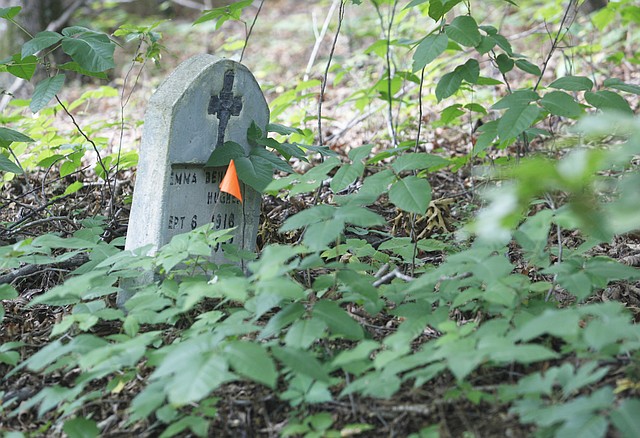Upkeep at historic burial ground for blacks falls to few volunteers
Friday, January 1, 1904
Black men whose lives and deaths drew the attention of presidents and the U.S. Supreme Court, namesakes for buildings and subjects of stories, lie in a neglected cemetery near Missionary Ridge.
Pleasant Gardens is best known for being the burial place of Ed Johnson, a black man who was lynched on the Walnut Street Bridge in 1906.
Fine words were said at the cemetery over him, as well as men like Dr. Thomas W. Haigler, famous for his contributions to health care around the turn of the 20th century, and Joseph P. Smith, a principal for whom a local elementary school was named.
But today, years of inattention have left the burial ground overgrown with vines and brush, with fallen headstones and dozens of sunken graves. It's a sad tribute to the hundreds of blacks buried there as far back as the late 1800s. A monument on the site says the cemetery was founded April 22, 1890.
Nearby resident David Young, a retired vice president of finance for Electric Systems Inc., had been working to clean the site before the volunteers came.
Now he works with a handful of other volunteers who battle the forest and the overgrown vines to keep walking paths clear and tombstones visible.
"It's not as scary now as it used to be," Young said. "The roads were overgrown, just dense overgrown brush everywhere."
Young has started recording the names and locations of tombstones to draw a grid so that people may find their loved ones' graves.
Orchard Knob Elementary School Principal LaFrederick Thirkill established a scholarship in 2009 in the name of Ed Johnson.
The late Chattanooga attorney Leroy Phillips and former Chattanooga Times and Dallas Morning News reporter Mark Curriden wrote the book "Contempt of Court" about the trial of Johnson, who was hanged on the Walnut Street Bridge after being accused of attacking a white woman.
The 1906 case drew national attention and may have led to a reduction in lynchings across the nation, according to news reports.
The number of lynchings started to drop after the U.S. Supreme Court found Hamilton County Sheriff Joseph F. Shipp and others in contempt of court for not adequately protecting Johnson from a mob while he was in jail, according to Curriden.
Just last year, the cemetery was included in an episode of the NBC TV show "Who Do You Think You Are?" that featured singer Lionel Richie. The singer's great-grandfather, Lewis Brown, a pharmacy worker and cemetery caretaker is buried there.
So are Andrew and Leroy Wright, two of the four Chattanoogans involved in the "Scottsboro Boys" case. The nine young black men and teens were falsely accused of raping two white women in 1931 in a case that became a byword for racism and miscarriage of justice.
Thirkill called for the cemetery to become a public land trust in 2006 so that the city could care for it.
But the owners wouldn't sign over the property and the city can't touch it as long as it's in private hands.
So Young continues killing weeds and chopping vines.
He's afraid that if he stops cleaning, the cemetery so rich in Chattanooga history will become an overgrown forest again.
